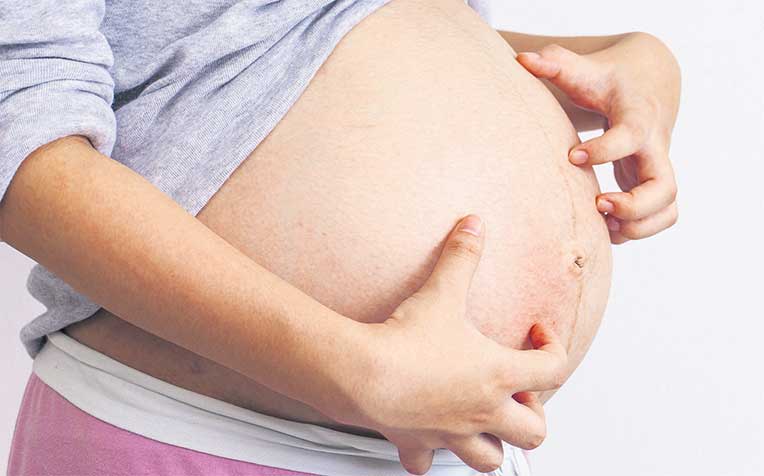
women should moisturise their skin about two to three times a day.
Every month, the dermatology service at KK Women’s and Children’s Hospital (KKH) diagnoses about eight women with skin conditions that occur during pregnancy or shortly after.
Of the four main types of skin conditions, the most common is atopic eruption of pregnancy (AEP).
AEP usually appears in early or mid-pregnancy.
It includes conditions like eczema, which occur only when a woman is pregnant.
The eczema that occurs during pregnancy is usually severe, said Dr Liew Hui Min, a consultant with KKH’s dermatology service.
A woman with AEP will feel itchy and will usually scratch her skin, resulting in inflamed bumps.
Sometimes, the bumps may get infected and there will be blisters, she said.
Dr Liew added: “The rashes usually develop suddenly. These women may not cope very well and may not be familiar with the use of moisturisers.”
Hence, their eczema is usually bad and tends to improve only after labour, said Dr Liew.
Apart from AEP, the second most common dermatosis of pregnancy is polymorphic eruption of pregnancy (PEP).
This is an itchy rash that commonly starts within stretch marks on the abdomen and typically occurs during late pregnancy.
Worldwide statistics suggest that the chances of a pregnant woman contracting AEP ranges from one in five to one in 20, while the chances of her getting PEP is one in 160.
The other two types – pemphigoid gestationis and intrahepatic cholestasis of pregnancy (ICP) – are rare.
Pemphigoid gestationis causes a blistering rash with an intense itch, while ICP causes an intense itch and scratch marks. They usually occur in the third trimester of pregnancy.
Dr Liew has some advice for women who have a pregnancyrelated skin condition.
MOISTURISE
In general, expectant women should moisturise their skin about two to three times a day.
Use a fragrance-free moisturiser to avoid irritating the skin. The product should be affordable so that it can be applied generously and regularly. Such moisturisers are available at pharmacies.
GET HELP EARLY
If a rash persists despite the use of moisturisers, consult your obstetrician or dermatologist.
Timely intervention would prevent an infection due to the scratching and picking of skin, and save you from sleepless nights.
The mainstay of treatment for dermatoses during pregnancy includes the use of topical moisturisers and a steroid – the potency of this medication will differ, depending on the severity of the condition.
Steroids have to be prescribed by a doctor. When used under medical supervision, they should not harm the foetus, as very small amounts would be prescribed.
If the skin condition is mild and treated early with topical medication, such as a good moisturiser and steroid cream, it may prevent the condition from worsening.
DANGEROUS
Expectant women who develop blisters and an intense itch, without any clear rashes, should seek medical help immediately.
They may have ICP or pemphigoid gestationis, which can result in foetal abnormalities, pre-term delivery or death.
AEP and PEP cause rashes but do not affect the foetus or result in premature birth.
The estimated world prevalence of ICP and pemphigoid gestationis is one in 5,000 and one in 50,000 respectively.
Contributed by














 Get it on Google Play
Get it on Google Play